As you undoubtedly know, firearms don’t tend to be cheap. Even the inexpensive ones can cost a chunk of change, and, so, if you’re like most people, you have to budget for your next firearm purchase.
Fortunately, though, some companies look for ways to make owning a firearm more affordable. Granted, you’re unlikely to find some of the nice extras on an inexpensive gun that you would find on a high-end model, but, hey, if you’re looking for inexpensive protection, bells and whistles aren’t your first concern.
So, if you’re looking for an inexpensive concealed carry firearm, Jacki Billings recommends four pistols under $400 for you to consider. They are the Bersa Thunder .380, the Ruger LC9S, the Beretta BU9 Nano, and the Hi-Point C9.
As you likely noticed, the Berson Thunder .380 is the only weapon on the list using .38 caliber cartridges, and, according to Billings it retails for $290. Billings writes,
Designed with concealed carry in mind, the Thunder pairs a lightweight small-frame to the .380 cartridge, which offers little to no recoil. The result? The Thunder proves to be a cinch to manipulate and shoot. During the course of testing, I had no issues with the Thunder firing, feeding or extracting the ammo I fed it.
But maybe you’re a 9mm person. Billings notes that “[c]oncealed Carry wise, the Ruger LC9s’ small build works in its favor, allowing it to nestle inside holsters easily and efficiently, concealing flawlessly in a variety of outfits.”
Or maybe you want an even smaller 9mm. If so, you may prefer the Beretta BU9 Nano which has a 3″ barrel. In terms of its benefit for concealed carry purposes, Billings notes that “[t]he snag-free aesthetic of the BU9 Nano certainly helps it on that draw, keeping the gun from grabbing onto clothes.”
Finally, if budget is the ultimate consideration for your next concealed carry purchase, the Hi-Point C9, with it’s MSRP of $199 (with a price of $139 for used models), may be the one for you to consider. Now, people seem to love or hate Hi-Point with no middle ground, and this isn’t a luxury firearm by any means. Still, it will give you a concealed carry firearm (granted, it’s almost 30 ounces, so not gracefully concealed) for an inexpensive price. On it’s plus side, though, other than its low price point, the extra weight reduces recoil when fired, and Billings found this surprising benefit:
It may sound like I am dragging the HiPoint design, but actually, I had a blast with the C9. In fact, it was my favorite gun to shoot and I ended up buying one. It’s quirky, but there’s a certain fun factor to it.
So, which one is the right firearm for you to choose? That’s really going to depend on you, your budget, and whether you’re willing to pay a little more for a more easily concealed firearm or a pistol chambered in .38.
Still, if you’re in the market for an inexpensive concealed carry firearm, any of these four models would be a good starting point for your shopping process.

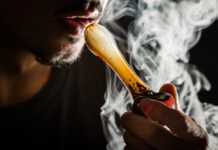



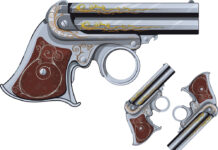




![What Level Holster Should You Be Using? [Video]](/wp-content/uploads/2024/04/Depositphotos_44548439_S-218x150.jpg)
![Case Study: Defensive Gun Use [Video] NSFW](/wp-content/uploads/2025/07/Depositphotos_282075792_S-218x150.jpg)







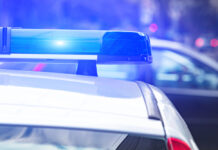
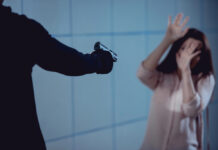
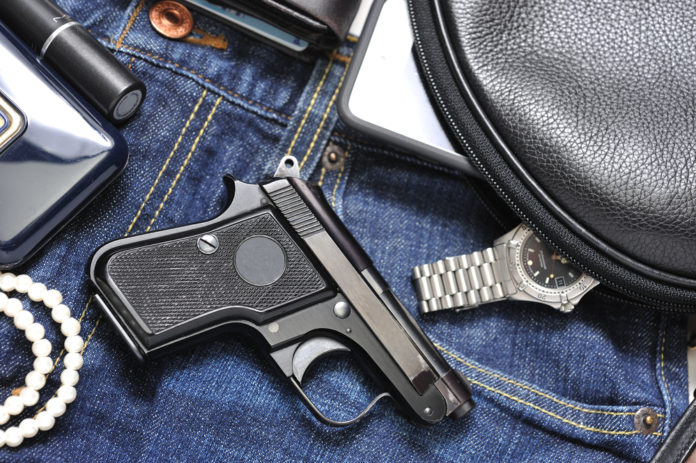


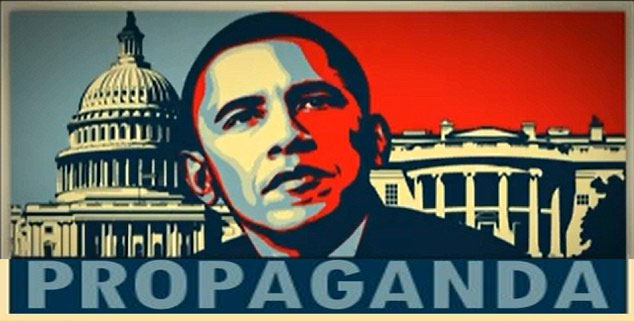







![Optic Ready vs Milled slides? [Video]](/wp-content/uploads/2024/02/image-3-100x70.png)
![[Checklist] What Gear You Need To Take Pistol, Rifle & Shotgun Training Courses [Video]](/wp-content/uploads/2023/07/Depositphotos_275087632_L-100x70.jpg)
![What is in Carter’s 2023 EDC? [Video]](/wp-content/uploads/2023/07/Depositphotos_146856137_L-100x70.jpg)



I have a Bersa Thunder .380, but I also like my Sig .380s as well
I currently carry a Taurus G2S, a 9mm single stack cc pistol. I am aware of Taurus’ checkered reputation, but I have had no problems with my G2S. It weighs 1/2 of what the Hi-Point does, and has adjustable sights, a 3.1″ barrel, and a pic rail for accessories. Cost: 230.00. They can be found cheaper.
The Taurus p111 G2 is a great gun. Taurus was bought by the parent company of Smith and Wesson, management was fired and new machinists and management from Smith and Wesson were brought in to clean up their act. Taurus is the current best buy for the money.
Carried my PPK/S in .380 for nearly 25 years. Just switched to a Sig P365 because my aging eyes don’t pick up the Walther’s sights in low light. Of course, even a used PPK runs more than $400 these days.
the bersa is a 380 and really uses .355 inch bullets just like the other guns mentioned that shoot the 9mm luger round. the berretta 25 in the picture is a good deep concealment piece and I have one and love it. and a good 38 special revolver is reliable and hard to beat. RIA,Taurus ( they seem to be producing guns that work again, thank God because I love mine), Charter Arms , Rossi, just to name a few. and don’t overlook the used gun. most of the guns I have were used. ( lost of 38 special snubs). there are good deals out there to be had. be safe , have fun , and vote to keep our rights ( domcracts are communist and don’t believe in the 2nd amendment as they prove this time and time again).
The .380 is not a 38 caliber it is a 35 caliber a gun writer should know that
I am a retired ER nurse with more than 30 years working in civilian ER’s. Before that I was a medic on a team that did SAR and Recon overseas back in the early 70’s. I have seen more GSW’s than most people in the US who do not work in Trauma Centers and I have many of them beat. Between the Army and the ER, I believe I have some expertise in what works for self defense as I have seen the sampling that I have. I have seen very few fatalities from the .380. In my experience, it is completely inadequate for self defense. it cannot be counted to put someone down even with a head or chest shot. Seen it multiple times.
I have treated multiple people who were killed because they trusted inferior calibers such as the .380 for self defense. It does not have enough kinetic energy to do enough damage to provide real stopping power unless it is that person’s day to die.
Having seen people who were not stopped by 9 mm, I cannot fathom trusting my life to anything less than a 9 and I find it hard to believe it is adequate. One man was shot in the head more than once with a 9 and survived to kill himself months later while in jail awaiting trial for homicide.
I am amazed how many people believe that if they practice they will be able to do what needs to be done, not realizing that when that time comes, your reality changes, tunnel vision ruins your marksmanship, your weapon waves wildly up and down with each beat of your heart.
Practice is essential, but it must be under stress. Going to the range and shooting is not going to work. See how well you shoot with someone yelling at you and have fireworks going off around you. If you can’t do that, you probably will not survive the real deal. That’s one of the things the Army did back in the Vietnam days and many men found it very unnerving because it was not like the movies or tv.
BTW, I carry a 1911 Officer’s model by Smith in .45 ACP because I have seen very few survivors hit by that round. I say very very few, because it is possible someone did survive and I have forgotten.
WW 1 was started with a .380 ACP in 1914 when defense loads were non existant. Modern .380 ACP like the Hornady Critical Defense meets the FBI recommendations for penetration and expansion. I too spent nearly 12 years as a Paramedic, then 23 as an RN in the ER and in NICU. There’s not a caliber out that I would prefer to be shot with. I’ve seen what a 38grain solid point .22 can do as it bounces front to back in someone’s skull. It didn’t kill him, but he spent the rest of his life as a brussel sprout. Below 9mm velocities and muzzle energy, shot placement becomes critical.
The most recent study I read over self defense shooting showed an almost across the board percentage of 25 chance in stopping an assailant with 1 shot. The second shot brings that number up to 63%, a third hits the low 90’s regardless of caliber in the study. Food for thought.
After the dismal failures of the .38 cal revolvers used by the US Army and Marines, the US government began to recycle old stocks Model 1873 Colt revolvers in 45 caliber because they worked. The US sought out a newer model and the one they selected was the 1911 in .45 ACP. The US went to 1911’s as a sidearm. When those were not available during WWI, they went to the .45 revolver.
While the .380 may have been used by other military, it was not issued to US troops. See more about the history of the 1911 here (https://www.browning.com/news/articles/history-of-the-1911-pistol.html)
To belie your statement about being stopped by 1 shot, the reason the US went to the larger caliber was there were too many enemy soldiers hit multiple times that went on to kill our guys. I have seen people shot in the head with a .22 and a .32 with only minor deficits that the family related. Granted one guy was an alcoholic who had questionable ability before but the other walked out of rehab with only foot drop and speech difficulty. On CT, we could see the path of the slug as it bounced around making a pattern that looked like a 4.
I have seen patients who were killed believing that their .380 was adequate. They shot their assailant and in some cases the assailant died but not before the patient did to. And I have treated people shot in the chest with .380 who survived.
As I have said many times to many people over the years, being in a shootout is not like on tv or the movies. In Oklahoma City about 15-20 years ago, there was a police shootout in a restaurant with a suspect wanted for murder. More than 30 rounds were fired, less than half hitting the suspect.
In a study titled, HIT RATIO NYPD, they broke down police shootings from 1990 to 2000. The mean average of hits per shots fired was 15% over that period, with 1998 scoring the highest at 25% and 2000 coming in a low of 9%.
I took care of a guy shot 5 times in the chest with a .25 (we cracked his chest in the ER.) He died but not before he physically beat the shooter to death with a club. Police were happy as it was a drug deal gone bad.
Knowing that shot placement is critical is not enough. Having a gun that you can use is not enough. Having a gun, that you can use under that kind of stress and attain correct shot placement is what is needed. You know the expression about being up to your ass in alligators, being in a shootout is worse, ask any cop who has been there, or any veteran who spent time overseas.
If you are defending yourself from a meth addict who cannot feel the shot… Let’s say, if you don’t kill him with one shot, you may not get another. Oklahoma is trying a meth addict for killing a cop this week.
Now I’m confused!, I’ve watched James Bond (007) knock people off their feet and make terminating shots from 100 Meters with a Walther PPK? HaHaHa!
thank you for your experience and observation……i had a carry license years ago and had a 9mm and a 45 acp…thank god i never shot any one but i was perplexed at the popularity of the 9mm…it is a pipsqueak compared to the 45 acp….and let us not forget the 1905 trials by the army at replacing the 38 special with a better round…they chose the 45 acp…not the 9mm that was popular in europe…..Sadly i moved to a gun unfriendly state so did not pursue a carry license…i sold off my 1911 and my 9mm years ago…I am trying to re arm with a 45….forget the 9mm…..I think the 9mm craze is similar to the “spray and pray” mentality the army had in Viet Nam….I knew troops who would put a clip in their M-16 and spray the jungle…praying that they shot the VC…I think the large capacity 9mms give shooters the same feeling…Better to stop a perp with one round of 45 acp….which works…than “spray and pray” a stream of 9mm works……thanks for your experienced comments……!!!!!
I forgot to mention that when I arrived in country, I was issued a 1911A1. And yes, medics carried weapons unless they were conscientious objectors and no one in my unit was. I have seen what the .45 does on multiple occasions.
I like my 9mm C-9. It uses the same ammo as my carbine, and that’s important to me. It shoots well and is not too hard to conceal. Combine that with low cast, and, as far as I am concerned, it’s a winner for me.
I learned to use a M1911 from my Dad & Granddad at the age of 13. During Vietnam, I carried an old M1911 while on Point and never thought that it was not enough gun. I had brought with me a quick-draw holster for my M1911. I practiced every chance I got.
The day that my reflexes save my butt was – as I was taking a leak next to a chest-high bush after walking Point for almost an hour. All of a sudden I saw my M1911 extended in front of me when a single shot broke my inattention. A few seconds later I was still trying to adjust to what had just happened.
The Papasan had popped up with his SKS at the ready when my M1911 put him down with one shot to the chest. I had no idea what the heck had just happened. Everyone who saw it said it was like watching an old Western gun fight with one shot ringing out. The M1911 .45 ACP did its job. Me, not so well.
I shot with reflex and not with my head It could have been real bad had it been one of my guys squatting there and then popping up. No one could understand why I gave away the holster and put the M1911 in my Rucksack until I needed it later for Point again.
The .45 ACP was chosen by the Army because it WILL do the job right the first time – every time. Training must always incorporate using your head to control a shot. Even today, the thought of how wrong that could have gone still gives me the creeps. On the other hand, I did save my guys who had stopped and laid down their weapons to get water and/or a smoke. They never knew how close I came to a Prison Sentence because I did not engage the primary safety device – my brain! The actual HERO that day was my M1911. Forty-seven years later I own two .45 ACP caliber weapons. One is an old M1911A1 and the other is a newer M1991. Not a misprint, it really is a Colt M1991. Yes it is a little on the heavy side, but I do know it will do the job right the first time.
In 1979 I attended Jeff Cooper’s Gunsight Ranch Training that required everyone to use a .45 ACP weapon. I have always been a good shot, and at that training I had a great time. Hogan’s Alley was fun until I only put one round in a bad guy silhouette’s forehead. The silhouette was shown with a shotgun. My instructor told me emphatically that anytime you are up against a person with a shotgun, you shoot: “two in the body and one in the head.” That saying became a comment we all would make at the office whenever we met someone who was an “Oxygen Thief.” Meaning, totally worthless.
The rest of my training session was a distance challenge between me and one of the new instructors. He was good, but I had way more practice at 20, 30 & 50 yard targets with my M1911. Ringing the gong was not an every time occurrence at the 30 & 50 yard steel target, but the M1911 was not designed for that distance and it never hurts to know how you can do at so far away. After 2 full mags of practice, I could hit the 20 year steel target every time afterwards. It truly is all about the practice. Practice make perfect? Maybe, but it will save your life in a high stress situation. All you have to do is remember to breathe, maintain control and know where your shot is going to go, even if you miss the first time.
I own a .380 which is a “9mm Short.” ( AKA 9mm Kurtz ) Fun and cheaper to shoot and that’s why some folks have and like them.
If I had to use a .380 in a self-defense situation, I would go for a belly-button shot first and a neck shot, then repeat until the weapon is empty. If you come into my home, you can expect deadly force is waiting for you to do something additionally stupid.
If I have my M1991 with me, it will be: two in the body and one in the head. Your dead…end of story!
Comments are closed.